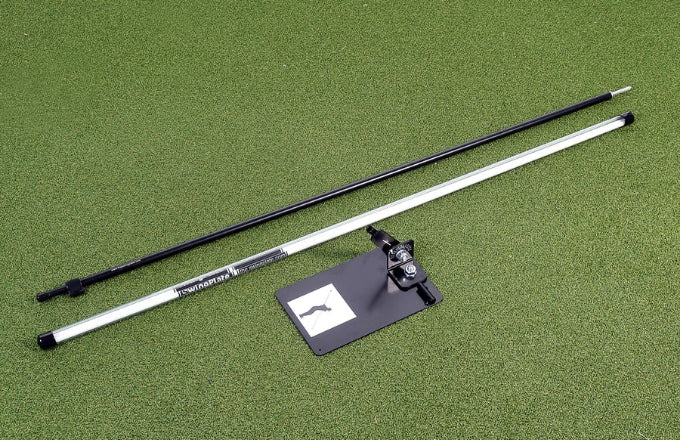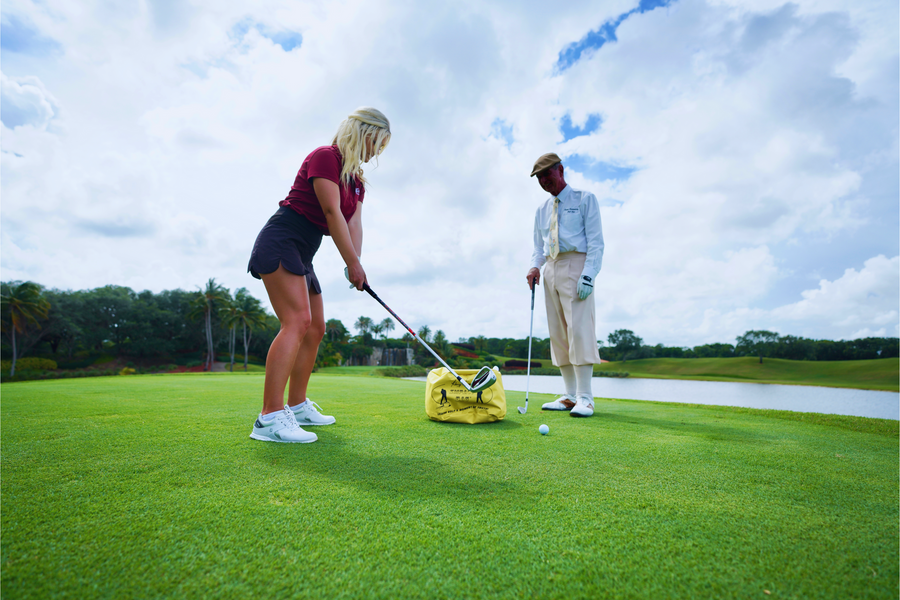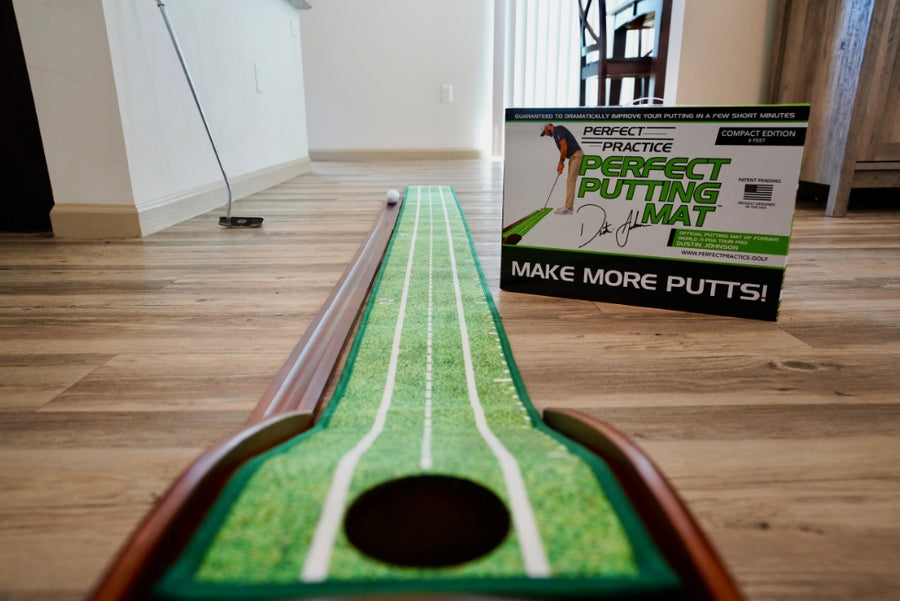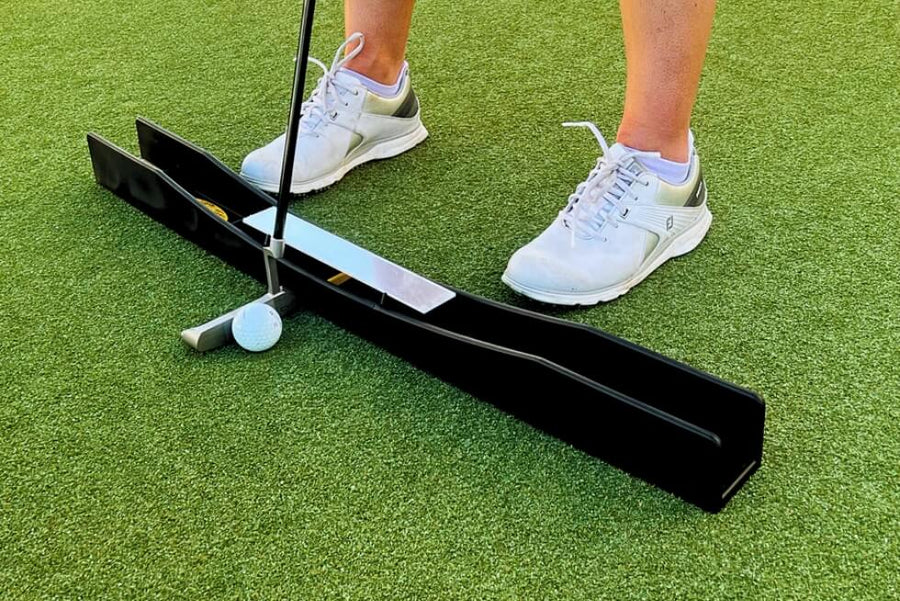Picture this: you're on the golf course, the sun is shining, and you're ready to unleash a powerful drive down the fairway. But instead, your golf ball takes a detour, veering off to the right (or left, for left-handed golfers), ruining your shot and your scorecard. What happened? You just experienced the dreaded golf slice.
If you're one of the more than 25 million Americans who played a round of golf in 2022, you know that for a golfer, few things are as frustrating as a persistent slice. It's the kind of shot that can send your ball careening into the rough, the trees, or even the neighboring fairway. If you're nodding in recognition or shaking your head in frustration, you're not alone. The golf slice is a common problem that plagues golfers of all skill levels.
But fear not! In this comprehensive guide, we're going to demystify the golf slice and provide you with valuable insights and practical solutions for how to fix your golf slice. Whether you're a seasoned golfer or just getting started, understanding the golf slice and how to correct it is crucial for improving your game.
So, grab your clubs, clear your mind, and get ready to embark on a journey to straighter, more accurate shots. By the end of this guide, you'll have the knowledge and tools to tackle that pesky golf slice head-on and start enjoying your time on the course even more.

Understanding the Golf Slice
Before we dive into the nitty-gritty of fixing a golf slice, let's get a clear understanding of what a golf slice is and why it happens.
Defining the Golf Slice
What is a slice in golf? At its core, a golf slice is a shot that curves in the air from left to right (for right-handed golfers, and vice versa for left-handed players). It's the opposite of a hook, which curves from right to left. Slices are notorious for robbing golfers of distance and accuracy, making them a constant source of frustration.
The Science Behind a Slice
To understand why a golf ball slices, we need to delve into the science of ball flight. The two primary factors that influence ball flight are the clubface angle and the swing path. When the clubface is open (pointing right of the target) at impact and the swing path is out-to-in (across the target line), you get a slice. This combination imparts side spin on the ball, causing it to curve.
The Typical Ball Flight of a Slice
A sliced shot typically starts relatively straight before veering off to the right (for right-handed golfers). This sideways movement can result in lost distance and accuracy, often ending up in trouble.
The Frustration of Dealing with a Slice
Ask any golfer who has struggled with a slice, and they'll tell you that it's incredibly frustrating. It feels like you're fighting against your own swing, and it can make the game less enjoyable. However, the good news is that a slice is a fixable problem, and understanding its causes is the first step toward improvement.
Common Causes of a Golf Slice
Understanding the root causes of a golf slice is fundamental to fixing it. Let's explore some of the most common factors contributing to this frustrating shot.
Grip Issues
One of the primary culprits behind a slice is an improper grip. If your grip is too weak (hands turned too much to the left for a right-handed golfer), it can result in an open clubface at impact, promoting a slice.
Stance and Posture
Your stance and posture play crucial roles in your swing mechanics. Poor alignment and posture can lead to an out-to-in swing path, a major contributor to slices. Ensure that your feet, hips, and shoulders are properly aligned with your target.
Clubface Angle
The position of the clubface at impact is critical. An open clubface (pointing right) can create the sidespin necessary for a slice. Work on squaring the clubface at impact to reduce the likelihood of a slice.
Swing Path
The path your club takes during your swing is a key determinant of your shot's direction. An out-to-in swing path, where the club approaches the ball from outside the target line, is a common cause of a slice. Focus on swinging on an inside-to-out path to correct this issue.
Equipment Considerations
Believe it or not, your equipment can influence your tendency to slice. A driver with too little loft can make it challenging to launch the ball properly, increasing the chances of a slice. Additionally, using the wrong type of golf ball can exacerbate slicing issues.
Diagnostic Tools for Assessing Your Slice
Now that we've identified the common causes of a golf slice, let's explore some valuable diagnostic tools that can help you pinpoint the specific issues in your swing.
Golf Swing Trainers
These training aids are designed to improve your swing mechanics. They can help you develop a proper swing plane, which is essential for reducing the likelihood of a slice. Golf swing trainers provide real-time feedback, allowing you to make adjustments as you practice. The Swing Plate and the Swing Plate Dual Pro are two popular swing trainers you can use to improve your mechanics.
Divot Board
A divot board is a fantastic tool for analyzing your divot pattern. The direction of your divot can reveal whether your swing path is causing the slice. If your divots consistently point to the left (for right-handed golfers), it indicates an out-to-in swing path that contributes to slicing.
Golf Impact Bag
A golf impact bag is a versatile training aid that can help correct several issues that lead to a slice. By striking the bag with the correct clubface angle and swing path, you can develop muscle memory for a more neutral impact position.
These diagnostic tools serve as invaluable allies in your journey to fix your golf slice. They provide tangible feedback that helps you identify and address the specific aspects of your swing that need improvement.
Correcting Your Golf Slice
Now that we've identified the common causes of a golf slice and explored diagnostic tools, let's delve into how to correct your golf slice and get you on the path to straighter, more accurate shots.
Grip Adjustments
Begin by evaluating your grip. If it's too weak (hands turned too much to the left for right-handed golfers), it can promote an open clubface at impact. Adjust your grip to a more neutral position by ensuring the "V" formed by your thumb and forefinger points towards your right shoulder (for right-handed golfers). This change can help square the clubface.
Stance and Posture
Focus on your stance and posture. Ensure your feet, hips, and shoulders are properly aligned with your target. A square stance helps you swing on a straighter path. Maintain a balanced posture with a slight forward tilt from the hips.
Backswing and Downswing
Pay attention to your backswing and downswing. Work on a more controlled and balanced backswing, avoiding overswinging, which can lead to an open clubface. During the downswing, focus on a smoother transition and an inside-to-out swing path.
Clubface Control
Develop a sense of clubface control through impact. Practice squaring the clubface at impact using drills and exercises. This is a critical element in reducing slices.
Drills and Exercises
Incorporate drills and exercises into your practice routine. For example, practice swinging with a headcover or alignment stick placed outside the ball to promote an inside-to-out path. Another helpful drill involves placing an object like a water bottle just outside the ball, encouraging you to avoid hitting it with the clubhead.
Practicing Your New Swing
Once you've started making corrections to your swing, it's time to put in the practice to solidify these changes. Here are some key tips for effective practice:
- Consistency: Consistent practice is crucial. Set aside dedicated time for practice sessions, even if they're short. Regular repetition helps ingrain the corrected swing.
- Use of Training Aids: Utilize golf swing trainers, divot boards, and golf impact bags to reinforce your new swing mechanics. These tools provide immediate feedback and can accelerate your progress.
- Varied Distances and Clubs: Practice with a variety of clubs and distances. Work on shorter irons and gradually progress to longer clubs, including your driver. This comprehensive approach helps you apply the corrected swing to all aspects of your game.
- Video Analysis: Consider recording your practice sessions to analyze your swing. Video analysis provides valuable insights into your progress and helps identify areas that still need improvement.
- Mental Focus: Stay mentally focused during practice. Visualization can be a powerful tool. Imagine hitting straight, accurate shots with your corrected swing.
Remember that fixing a golf slice takes time and patience. Don't be discouraged by occasional setbacks. Golf is a game of continuous improvement, and the journey to a better swing is as rewarding as the destination.

Troubleshooting Your Progress With Your Golf Slice
As you work diligently to fix your golf slice, it's essential to recognize that challenges may arise along the way. Let's address some common issues golfers often encounter during this process and provide practical solutions to keep you on track:
Plateaus in Improvement
It's not uncommon to hit plateaus in your progress. You may see initial improvements, but then your slice creeps back in. When this happens, resist the urge to revert to old habits. Instead, focus on the fundamentals you've learned and continue practicing.
Overcorrection
Some golfers overcorrect their slice and end up with a hook, where the ball curves sharply to the left (for right-handed golfers). If this occurs, revisit the basics of grip, stance, and swing path to find the right balance.
Inconsistent Application
Maintaining consistency in your new swing can be a challenge. The key is repetition and mindfulness. Regularly practice your corrected swing mechanics, even when you're not on the course.
Impatience
Fixing a golf slice takes time, and impatience can lead to frustration. Stay focused on your long-term goals and the satisfaction of hitting straighter shots. Remember that every practice session contributes to your improvement.
Seeking Professional Help
If you find yourself struggling to make progress, consider seeking guidance from a golf instructor or coach. They can provide personalized instruction and valuable feedback tailored to your specific swing issues.
The Importance of Equipment to Fix Your Golf Slice
Your golf equipment can either support your efforts to fix your slice or potentially exacerbate the problem. Here's why it's crucial to pay attention to your gear:
- Driver Selection: The driver is often associated with slicing issues, particularly if it has too little loft. A driver with insufficient loft can make it challenging to launch the ball correctly. Consider selecting a driver with a loft angle that suits your swing and helps mitigate your slice tendencies.
- Custom Fitting: Custom fitting your clubs can have a significant impact on your game. A professional fitting ensures that your equipment is tailored to your unique swing characteristics. This can include adjustments to club length, lie angle, and shaft flex, all of which can influence your shot shape.
- Golf Ball Choice: The type of golf ball you use can also affect your shot shape. Some golf balls are designed to promote a straighter flight, while others are engineered for more control. Experiment with different ball options to find one that complements your corrected swing.
By paying attention to your equipment and making informed choices, you can create a synergy between your swing improvements and your gear, resulting in more consistent and accurate shots.
Fine-Tuning Your Game
Fixing your golf slice is a significant step toward improving your game, but the journey doesn't end there. Golf is a sport that requires continuous refinement and adjustment. Here are some key considerations for fine-tuning your game:
- Ongoing Adjustments: Understand that golf is a dynamic game, and your swing may evolve over time. Continuously monitor your swing mechanics and be open to making minor adjustments as needed.
- Video Analysis: Consider using video analysis to assess your swing periodically. This technology allows you to visualize your swing from different angles, helping you spot any deviations from your corrected swing path.
- Playing Conditions: Recognize that playing conditions, such as wind and course terrain, can affect your shot shape. Adapt your swing and shot selection accordingly. For instance, when facing a strong crosswind, adjust your aim and club choice to counter the wind's impact.
- Mental Approach: The mental aspect of golf is just as crucial as the physical. Develop a pre-shot routine that helps you stay focused and calm under pressure. Visualize successful shots and maintain a positive mindset on the course.
- Professional Guidance: Don't hesitate to seek occasional guidance from a golf instructor or coach. They can provide expert insights, help you fine-tune your swing, and address any new challenges that may arise.
- Consistent Practice: Maintain a consistent practice routine even after fixing your slice. Regular practice reinforces muscle memory and ensures that your corrected swing becomes second nature.
Remember that golf is a lifelong journey, and there's always room for improvement. Embrace the process of fine-tuning your game, and you'll continue to see progress in your quest for lower scores and more enjoyable rounds.
Trust Golf Training Aids to Fix Your Golf Slice & Improve Your Score
At Golf Training Aids, we're passionate about helping golfers of all levels unlock their full potential on the course. If you're determined to fix your golf slice and take your game to the next level, we've got you covered. Explore our wide range of golf training aids designed to accelerate your improvement journey. Our selection of quality equipment is carefully curated to assist you in addressing swing issues, enhancing consistency, and achieving that coveted straight shot.
Don't let a golf slice hold you back any longer. Visit Golf Training Aids today, and let's work together to transform your game. Your path to a more enjoyable and rewarding golfing experience starts here!










